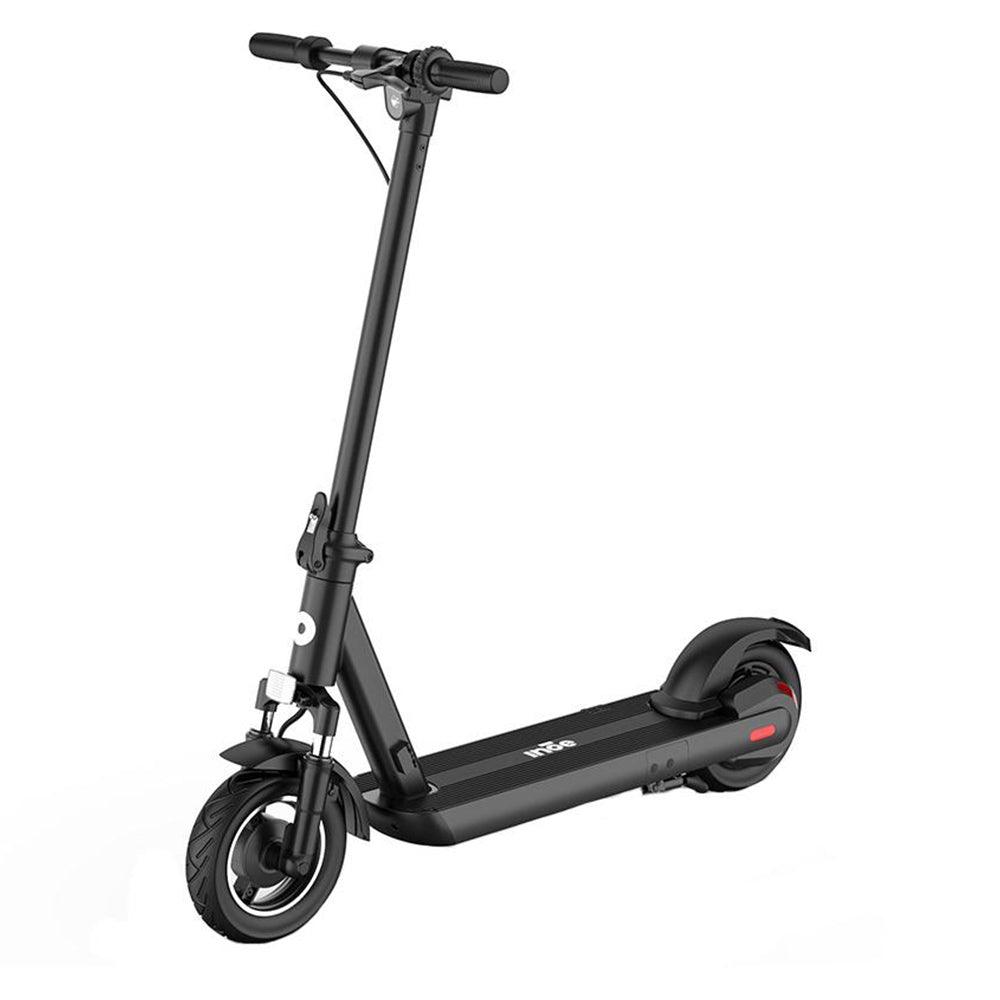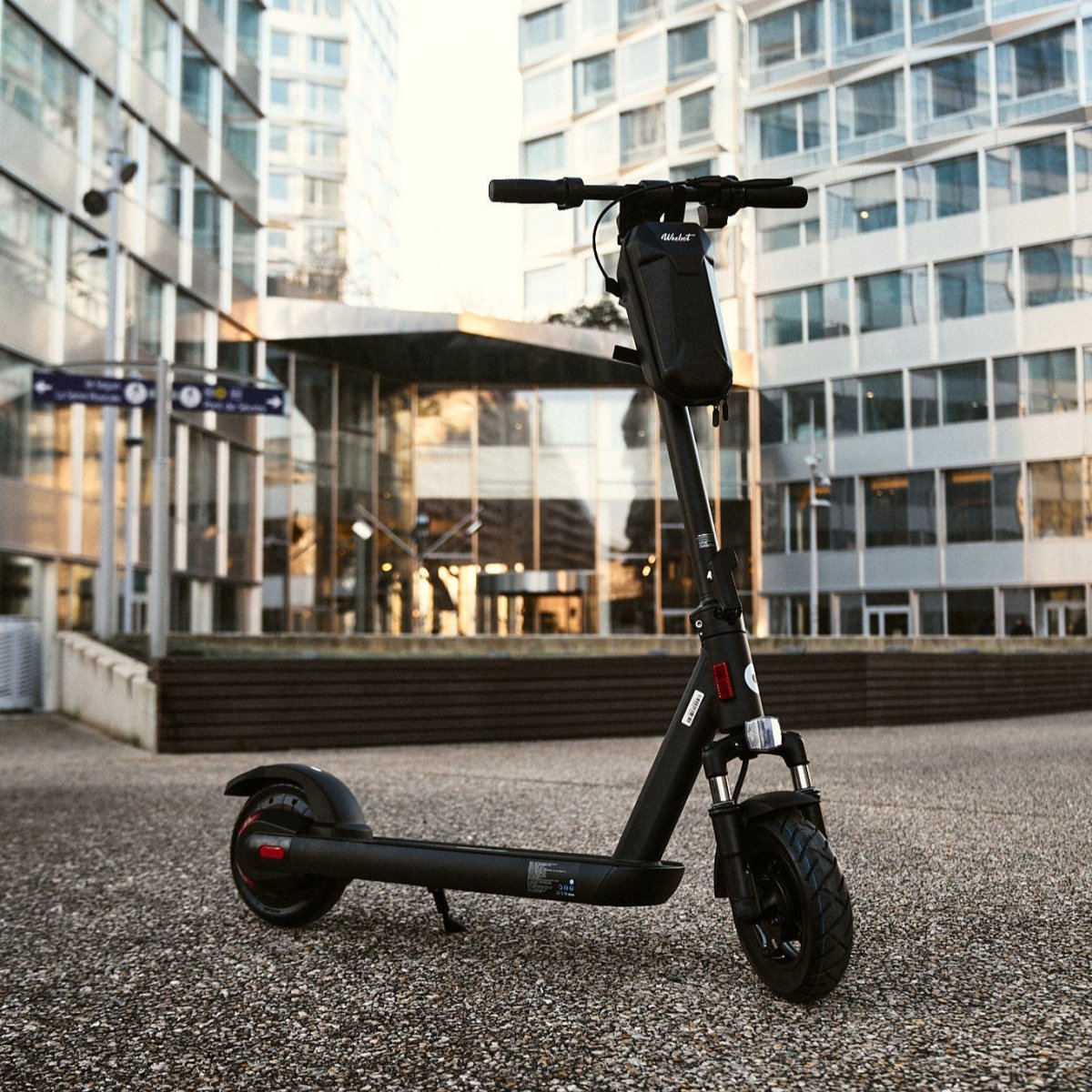Electric scooters are now a common means of transport in the city. Although they are ultra-practical and eco-friendly, these devices are subject to strict regulations, particularly regarding their use. Can electric scooters ride on the sidewalk? This article helps you to clarify things.
The general regulation of electric scooters
If you are new to the world of electric scooters, be aware that there are some basic rules governing their use. These rules aim to ensure smooth and safe coexistence with other road users. Here are the main points to remember.

Definition of EDPM
Electric scooters belong to the category of Motorized Personal Transport Devices (EDPM). According to article R311-1 of the Highway Code, an EDPM is a single-seat vehicle, equipped with a non-thermal engine and designed to travel at a speed of 6 to 25 km/h. Today, this vehicle comes in several types. On the market, we find foldable electric scooters, models with large wheels, waterproof, with long battery life, etc.
The general traffic rules
To ensure the safety of road users, decree n° 2019-1082 of October 23, 2019, has established certain rules that must be followed.
First of all, you must be at least 14 years old to be able to ride an electric scooter. The machine must be limited to 25 km/h, have a maximum power of 500W, weigh no more than 36 kg, and have liability insurance to cover potential damages.
The device must also be equipped with front and rear lights, a sound warning device, retro-reflective devices, as well as efficient and effective brakes. Finally, it is strictly forbidden to ride double on an electric scooter.
Can you ride electric scooters on the sidewalks?
The answer is no. Electric scooters are prohibited from circulating on sidewalks, due to their classification as EDPM. Indeed, this type of vehicle is subject to strict regulations in public spaces aimed at ensuring the safety of pedestrians.

A general prohibition by the Highway Code
In France, the ban on electric scooters on sidewalks is governed by the Highway Code. This measure was implemented to avoid disturbing pedestrians and to prevent accidents with them.
Any violation of this rule is subject to a fixed fine of €135, which may be reduced to €90 or increased up to €375 in case of repeat offenses. The fine applies to riders who do not comply with the current regulations and ride on sidewalks without specific authorization.
The exceptions and special cases
Despite the explicit prohibition of the Highway Code, municipalities can grant exemptions under specific conditions. Indeed, in certain urban areas, the mayor can authorize the circulation of electric scooters on sidewalks through a municipal resolution. This allows for the adaptation of local regulations to the needs of users.
But be careful, walking on the sidewalk obviously comes with several rules to follow:
- Move at a slow pace: To ensure the safety of pedestrians, the scooter must travel at a maximum speed of 6 km/h.
- Priority to pedestrians: Riders must always yield to pedestrians and ensure they do not obstruct them.
- Drive manually: in some cases, it may be requested that the device be held by hand when pedestrian density is too high.
Certain pedestrian areas may also be open to electric scooters under certain conditions. This is particularly the case in city centers and walking areas. However, these authorizations remain exceptional and are always subject to the safety rules mentioned above.
What alternatives are there to walking on the sidewalks?
Prohibiting the use of electric scooters on sidewalks pushes some users to find alternatives. To assist them, the regulations provide suitable solutions to ensure harmonious coexistence with other road users. These not only guarantee their safety but also contribute to smoother and more harmonious traffic.

The bike paths
As you already know, electric scooters must ride on bike lanes when available. They provide a safer environment for riders, reducing the risk of accidents with pedestrians and other motor vehicles.
The roadway
In the absence of a bike lane, electric scooters can ride on the roadway. But only on roads where the maximum speed limit is 50 km/h.
And to ensure your safety, here are some basic rules to follow:
- Prohibition of expressways: For obvious safety reasons, scooters are not allowed to travel on roads where the speed limit exceeds 50 km/h.
- Respect for traffic rules: Like any vehicle, users of electric scooters must obey traffic lights and yield at intersections.
- Responsible driving: It is generally advised to ride in a group on the roadway and to remain vigilant towards other motorized vehicles.
The importance of civil liability for users of electric scooters
Electric scooters are super convenient, but they come with their risks. An accident can happen quickly, and if you are not insured, the consequences can be severe. This is why you absolutely need to have liability insurance.

What liability insurance covers
Liability insurance covers the damages you may cause to others in the event of an accident. For example, if you hit a pedestrian or damage a car, the insurance takes care of the repair costs or compensation. Specifically, this includes:
• Injuries to third parties: If you injure someone while driving, the insurance will cover their medical expenses and compensation.
• Property damage: If you damage a car or an asset, the insurance takes care of the repairs.
In France, over 40% of accidents involving electric scooters involve pedestrians. So you can see that coverage is essential.
What happens if you are not insured?
If you cause an accident without insurance, you will have to pay everything out of pocket. And believe me, it can quickly become very expensive. In the event of an accident with a pedestrian, medical expenses can easily exceed €20,000, not to mention compensation for moral damages and legal fees.
L’ONISR recorded a 70% increase in scooter accidents over 3 years, which proves that it is more crucial than ever to be well insured.
Penalties in case of an accident without insurance
If you do not have insurance and cause an accident, you are responsible for the costs. In addition, you could end up with a fine of €3,750 and have to pay for repairs and compensation. The lack of insurance can also lead to legal action and significant legal fees.
Some figures that speak for themselves
Let's look at the facts to understand why insurance is essential:
• In 2022, nearly 6,000 accidents involved electric scooters.
• 40% of these accidents caused serious injuries, and in 20% of cases, the victims had to be hospitalized.
• The average cost of a scooter accident can easily exceed €10,000 when you add in medical expenses, repairs, and compensation.
These figures show that without insurance, you expose yourself to huge costs in case of a problem.
Specific regulations according to cities
The regulation of electric scooters varies from city to city. While in France, the law imposes a general framework, some municipalities adapt the rules according to their local needs. Here are some examples of cities that have implemented specific regulations.

Paris: A strict framework for electric scooters
In Paris, electric scooters are allowed on bike paths and the roadway, with a speed limit of 20 km/h in certain areas. Riding on sidewalks remains prohibited. Recent measures have strengthened the regulation of self-service scooters to prevent the overcrowding of public spaces.
Lyon: A more flexible but controlled model
In Lyon, electric scooters can travel on sidewalks at a reduced speed of 6 km/h. Specific parking zones have been created to avoid disorder in public spaces.
Brussels: A more recent and stricter regulation
In Brussels, the circulation of electric scooters on sidewalks is prohibited, except for municipal exemptions. Scooters must travel on the roadway or, if possible, on bike lanes. A speed limit of 25 km/h is in place, with restrictions in certain tourist and pedestrian areas.
Barcelona: Pedestrian zones prohibited for electric scooters
In Barcelona, since February 1, 2025, wearing a helmet is mandatory for users of electric scooters. Riding on sidewalks is prohibited, and scooters must be equipped with front and rear lights. Speed limits are in place, and parking restrictions have been established for motorcycles near schools and hospitals.
London: Restrictions on public spaces
In London, rental scooters are allowed with a speed limit of 20 km/h. Users must be at least 18 years old and hold a provisional driving license. No-go zones and GPS-controlled parking requirements are in place.
Conclusion
In summary, the circulation of electric scooters is strictly regulated to ensure the safety of all road users. Riding on sidewalks is prohibited, except for exceptional municipal authorization. Riders must use bike lanes or, if unavailable, the roadway on roads limited to 50 km/h. Adhering to the Highway Code, using safety equipment, and adopting responsible driving are important to avoid accidents.
Adopt safe practices to fully enjoy your electric scooter while respecting other users. Don’t forget to protect yourself properly to ensure your safety: wear a helmet, reflective clothing, gloves, and joint protection. At Weebot, you will find many options, whether in protective gear or electric scooters. Take a look!



